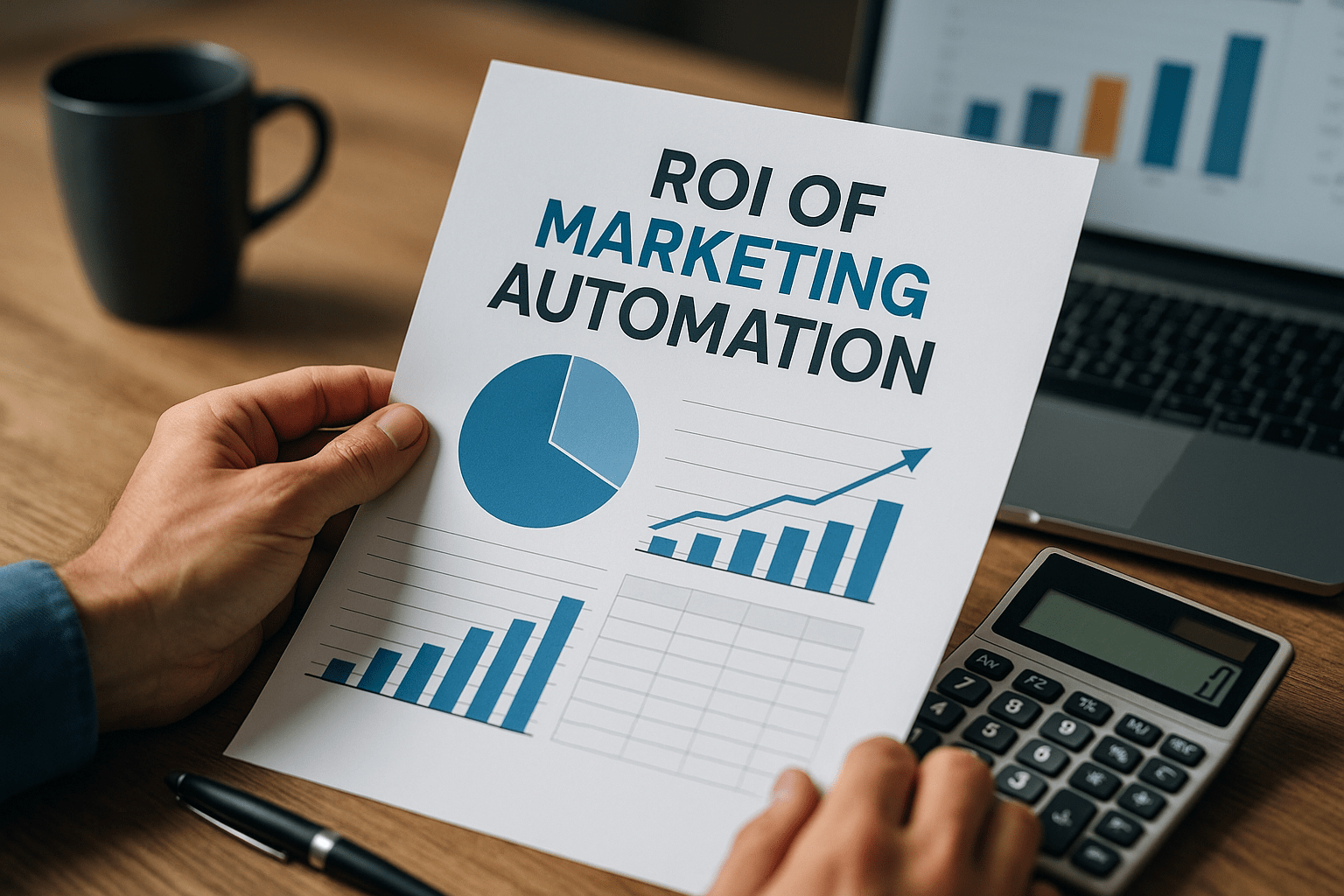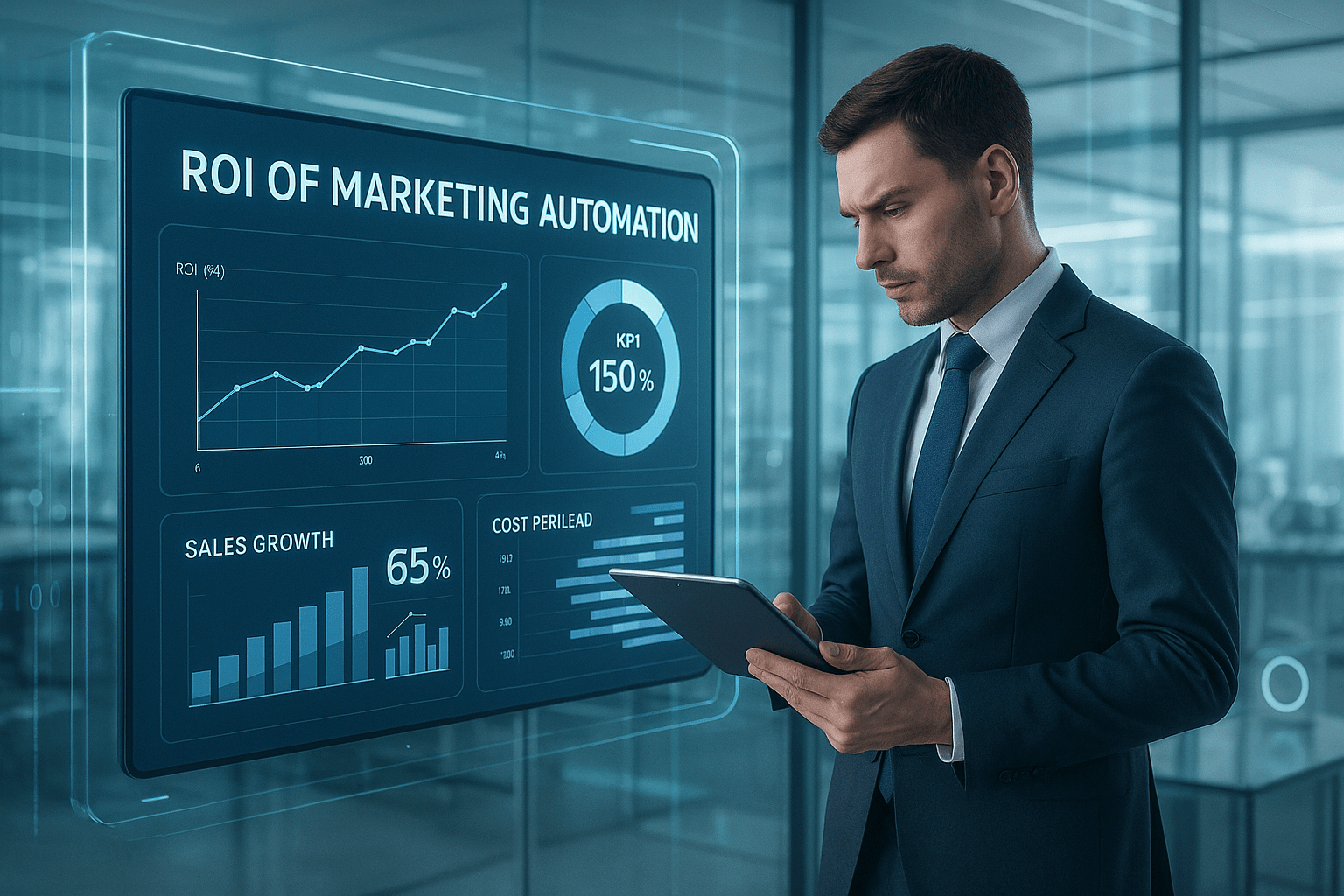Introduction
A lot of people in business are talking about marketing automation, but it’s more than just a cool new tool, it’s a game-changer for businesses that want to grow and see real results. Let’s look at the return on investment (ROI) from a human point of view to see if marketing automation is worth the money. We’ll look at the real-world benefits, obstacles, and metrics that make it a good decision.
What Is Marketing Automation and ROI ?
Marketing automation works like a smart assistant for your business. It takes care of routine tasks like sending emails, posting on social media, or managing customer data. In Bangladesh, especially in fast-growing cities like Dhaka, it helps businesses save time and connect with customers more effectively.
ROI (Return on Investment) shows if the money you spend is bringing good results. It compares what you earn to what you spend. For example, if you spend $100 on marketing and earn $500, your ROI is high because you earned much more than you invested.

Why Marketing Automation Matters in Bangladesh
In Bangladesh, businesses, from small startups to big companies, are using digital tools to grow. Marketing automation helps because:
- Saves Time: It does boring tasks like sending emails or scheduling posts, so your team can focus on big ideas.
- Reaches More People: Tools can send personalized messages to many customers at once, like emails tailored to their interests.
- Fits Local Needs: In Bangladesh, people love using social media like Facebook and apps like WhatsApp. Automation tools can target these platforms effectively.
For example, a clothing store in Dhaka can use automation to send discount offers to customers who visited their website but didn’t buy anything. This can turn curious visitors into buyers.
.

Benefits of Marketing Automation in Bangladesh
- More Sales with Less Work: Automation can send follow-up emails to customers who abandon their online shopping carts. A study shows 77% of businesses using automation see more sales conversions.
- Better Customer Connections: You can send personalized messages, like birthday offers, which make customers feel special and keep them coming back.
- Affordable for Small Businesses: In Bangladesh, many small businesses use affordable tools like Mailchimp, which has free plans for starters.
- Local Market Advantage: Automation helps target local customers with Bangla content or promotions for events like Eid, which boosts engagement.
For example, a Dhaka-based restaurant could use automation to send SMS reminders about table bookings, increasing customer turnout without extra effort.
A Small Business Win in the Real World
For example, Sarah owns a tiny online store where she sells handmade jewelry. Before she automated things, she spent hours sending emails and posting on social media by hand. She built up automated welcome emails, reminders for abandoned carts, and campaigns to get customers to come back after using a platform like Mailchimp. What happened? She saved 15 hours a week, which she used to make new goods, and her conversion rate went up by 40%. Her sales went up by 25% in six months, and her automation software paid for itself in less than two months.

Tips to Boost ROI in Bangladesh
- Start Small: Use free or low-cost tools like Mailchimp or Zoho to test automation without spending much.
- Know Your Customers: Create buyer personas (like “young professionals in Dhaka”) to send the right messages to the right people.
- Use Local Platforms: Focus on platforms popular in Bangladesh, like Facebook or Daraz, to reach more people.
- Track Results: Use tools like Google Analytics to see what’s working. For example, check if your email campaigns are getting clicks.
- Personalize Content: Send messages that feel personal, like using a customer’s name or offering deals based on their past purchases.
Maximize ROI tips
- Start with a small amount: Don’t try to automate everything all at once. Start with one or two tasks, such as scheduling social media posts or sending out email drip campaigns, and then add more as you become used to it.
- Don’t make things robotic; instead, use customer data to make experiences that are unique to each person. Automated communications that are too general can cause more harm than good.
- Keep an eye on everything: Use analytics to keep an eye on what works. To get the best results from your advertisements, run A/B tests.
- Train Your Team: Spend money on training so that your team learns how to use the platform well.
Final Thought
It’s not just about saving time with marketing automation; it’s also about working smarter to generate more money, keep customers, and make decisions based on data. There is an upfront expense, but the return on investment can be huge. For example, conversion rates can go up by more than 50%, consumers can save thousands of dollars, and customers will be pleased and keep coming back. That’s a gain that firms of all sizes should go after.
Are you ready to jump in? Look into platforms like GoHighLevel, HubSpot, Marketo, or Mailchimp to discover one that works for your budget and goals. You will get results sooner if you automate sooner.
FAQ


